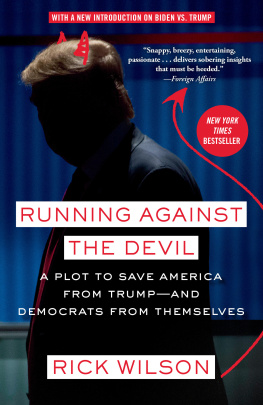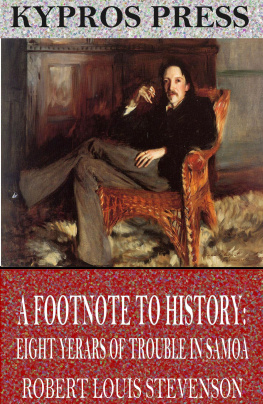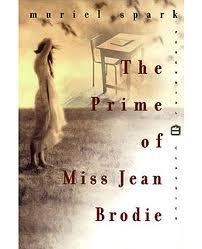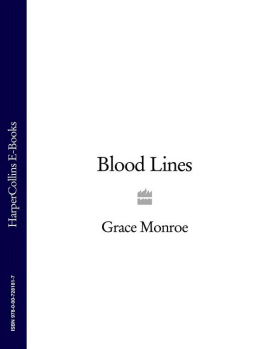
For Daisy and Corin
Thank you to Dutch writer Marco Daane for his insights on Deacon Brodies Amsterdam arrest; antique journo Bill Sinclair for his antiquarian Edinburgh journals; Ian Nimmo, past chairman of the Robert Louis Stevenson Club, for all his borrowed knowledge; Edinburgh Universitys Owen Dudley Edwards for his thought-provoking views; Keith Walker, Napier University information services adviser, for his enlightening help; tour leader Magnus Moodie for his Old Town guidance; David S. Forsyth, National Museums Scotland, for pointing me to Brodies forged keys and dark lantern; and John and Felicitas Macfie for showing me around their house that once housed RLS.
CONTENTS
Who was Deacon Brodie? Many people profess to know the name, but a surprisingly large number are unsure if they know his story. Not to be smug about it: that number would have included this writer before embarking on this project.
The daytime William Brodie was a superficially charming gentleman and city councillor who commanded the timorous respect of fellow citizens as he went about his business of winning work for his cabinet-making company. Certain things about him, however, betrayed the fact that he was something more than a good, solid, upright Edinburgher. In what was a fairly grey-toned eighteenth-century Scotland he could seem like a bit of a dandy, with his cocked hat, flowered waistcoat and silver buckled top-quality shoes; not to mention a livid scar on one cheek the result of a dispute over loaded dice in a card game. Even a stranger might have reckoned there was at least a boyish naughty streak there.
But it was far more serious than that. Despite showing occasional flashes of fatherly tenderness for favoured members of his five-strong illegitimate brood, he was basically a selfish and ungrateful soul with an insatiable appetite for money, who once said he would rather go to sea than develop the business left to him by his father along with a huge fortune as he had seen that big treasure prizes were being taken by sailors of every rank. Nor was he grateful for his privileged position on the city council that, in the days before corruption as we now know it, afforded him, as deacon of wrights, an endless conveyor belt of business opportunities. These, crucially, included crime. For as his day job gave him access to clients shops, houses and safe keys from which he made copies by night he morphed into a cloaked, sinister burglar who skulked around the closes of old Edinburgh with a dark lantern and darker intentions.
Eventually found guilty of a long series of robberies that had shocked and mystified the citys population, this was an extremely aberrant man who was to fall foul of his own greed and deep psychological complexities including an enthusiasm for theatricality that prompted him to become another person in the same body. So perhaps that should be persons, plural. By his own confession he was a very ingenuous fellow, but he was also a gambler, a spendthrift, a deceiver of two mistresses and generally perhaps the biggest societal sin of this particular period a betrayer of his own class and upbringing. Not for murder, but for this as well as his audacious attempt to rob the Excise Office of Scotland he and an accomplice were hanged on a scaffold said by some to have been designed by himself a year before.
But another piece of joinery figures large in his tale. One of his cabinets was to be the catalyst that fathered Dr Jekyll and Mr Hyde in Edinburgh. A century after its creation in Brodies workshop in the Lawnmarket, the cabinet stood at the foot of Robert Louis Stevensons bed in the New Town, and the then-young author, reminded every day of its provenance, became so obsessed by the Brodie story and thus by any human beings capacity to be more than one personality in one body that he was moved to no fewer than three creations based on him. These were two plays and a horror-story novella that became an immediate bestseller and introduced the world to the character(s) whose names have figured ever since in everyday English speech.
Talking to the Museum of Edinburgh about details of William Brodies life, including the family Bible from whose birth register all reference to him had been excised, we learned that in planning to mount an exhibition entitled Edinburgh, City of Stories it had invited friends of the institution to vote for their favourite tale out of three Burke and Hare, Greyfriars Bobby or Deacon Brodie. The vote went to Greyfriars Bobby, but surely its proponents were barking up the wrong tree? For as we were saying, if more people knew more about the Deacon, his remarkable tale would doubtless have easily swung the vote.
Why is it so remarkable? There are many reasons because of the stark differences in his two personalities; because he eluded truth and justice for so long; because he was not all evil, having a gentler side for friends (and families); because his upbringing gave him a false expectation that he would survive all that life would throw at him, regardless of his crimes; because he did not, in the end, survive them not his flight to Amsterdam as he prepared to take a ship to America and probably not his final demise, despite stories of collusion with the hangman, a protective steel collar around his neck and a doctor standing ready to revive him.
But mainly its because he symbolised at an extreme level that alarming human ability to be a split personality, and as such could fairly be seen as the driving impulse behind Stevensons still-resonant creation of Dr Jekyll and Mr Hyde.
Not convinced? You are herewith invited to read the story with sceptical eye, be carried along by it and see if, in conclusion, you disagree.
1
THE BRODIE ROOT
OF JE K YLL AND HYDE
When I was sick and lay a-bed,
I had two pillows at my head,
And all my toys beside me lay
To keep me happy all the day.
The night was a different matter. In that famous poem from his A Childs Garden of Verses , Robert Louis Stevenson fondly described the eponymous Land of Counterpane as pleasant. But it was not always so. Sometimes, as he snuggled under his sleep-time bedspread or counterpane in his second-floor room in the family house in Edinburghs Georgian New Town, the bronchitis-affected young Robert struggled to hold back the darker side of his fertile, vivid and often fevered imagination.
It was another early affliction that he would one day turn to his own fictional advantage, but it was often scarily real at the time, exacerbated by the looming presence in his room of a tall, double-doored cabinet, which, though he once called it a very pretty piece of work, was pregnant with sharp meaning for him. It had been bought by his grandfather, was then owned by his father, and had an origin of unusual interest for someone who was to become a writer of spine-chilling human experience and swashbuckling adventure.
Why was it so meaningful? It had been made nearly a century before by one of Edinburghs most notorious characters, a man whose double life still fascinates today: William Brodie. Known more commonly as Deacon Brodie with his title as convenor of the citys Incorporation of Wrights and Masons serving almost as a forename he sparked outrage in Edinburgh by dramatically betraying his class in having another, much darker side at play against his daytime persona, which was all about respectability. He had sartorial flair, a ready if thin-lipped smile, a family fortune, quick-witted conversation for clients and neighbours, a seat on the town council and most impressive of all a serious employer-career as the citys most respected cabinet-maker, who would often be expected to access his customers shops and homes to work in situ.
Next page













